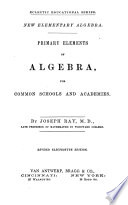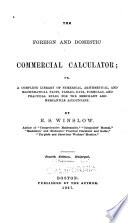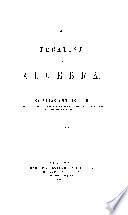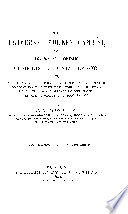 | Joseph Ray - Algebra - 1866 - 250 pages
...Multiply half the sum of the two extremes by the number of terms. From the preceding, it appears that the sum of the extremes is equal to the sum of any...other two terms equally distant from the extremes. Since l=a-\-(n — 1)J, if we substitute this in the place of */? I in the formula s = (I -f- a) -,... | |
 | Joseph Ray - Algebra - 1866 - 252 pages
...Multiply half the sum of the two extremes by the number of terms. From the preceding, it appears that the sum of the extremes is equal to the sum of any...other two terms equally distant from the extremes. Since l=a-\-(n — l)<Z, if we substitute this in the place of n the Hence, I in the formula s=(l-\-a)^... | |
 | Horatio Nelson Robinson - Algebra - 1866 - 328 pages
...sum of its terms must be twice that of the given series. Heuce, in an arithmetical progression, I. The sum of the extremes is equal to the sum of any...other two terms equally distant from the extremes. II Twice the sum of the series is equal to the sum of the extremes taken as many times as there are... | |
 | Joseph Ray - Algebra - 1852 - 422 pages
...two extremes, by the number of terms. From the preceding it appears, that the sum of the extremes u equal to the sum of any other two terms equally distant from the extremes. ART. 294. The equations l=a-\-(n — l~)d, and S=(*+Z)?, 2 furnish the means of solving this general... | |
 | Ezra S. Winslow - Business mathematics - 1867 - 232 pages
...greater extreme, and 3 is the less extreme. The numbers between these, (9, 7, 5,) are the means. In every arithmetical progression, the sum of the extremes is equal to the sum of any two means that are equally distant from the extremes; and is, therefore, equal to twice the middle... | |
 | Elias Loomis - Algebra - 1868 - 386 pages
...equations term by term, we have 2s=(a + Z)+(a+Z)+(a Here a+l is taken n times ; hence or s=-(a+l). 324. In an arithmetical progression the sum of the extremes is equal to the sum of any two terms equidistant from the extremes. This principle follows from the preceding demonstration. It... | |
 | John Fair Stoddard - Arithmetic - 1888 - 480 pages
...subtracting the common difference from each term successively ; as, 17, 15, 13, 11, 9, 7, 5, 3, and 1. 442. The sum of the extremes is equal to the sum of any two terms equally distant from them, or to double the middle term. Thus, 443. The following are the... | |
 | John Fair Stoddard - Arithmetic - 1868 - 428 pages
...subtracting the common difference from each term successively ; as, 17, 15, 13, 11, 9, 7, 5, 3, and 1. 442. The sum of the extremes is equal to the sum of any two terms equally distant from them, or to double tho middle term. Thus, 443. The following are the... | |
 | Joseph Ray - Algebra - 1866 - 420 pages
...Series. — Multiply half the sum, of the two extremes ly the number of terms. It also appears that The sum of the extremes is equal to the sum of any...other two terms equally distant from the extremes. 294. The equations l—a+ (n— l)d, and S=(a+r)™, furnish the means of solving this general problem... | |
 | Ezra S. Winslow - Business mathematics - 1872 - 256 pages
...extreme, and 3 is the less extreme. The numbers between these, (9, 7, 5,) are tiie means. In every arithmetical progression, the sum of the extremes is equal to the sum of any two means that are equally distant from the extremes ; and is, therefore, equal to twice the middle... | |
| |